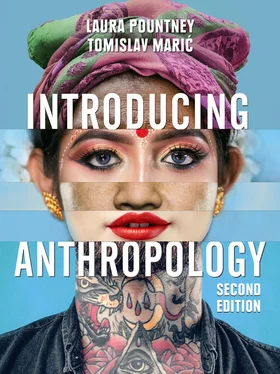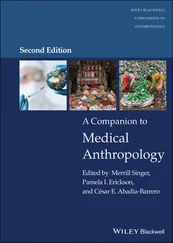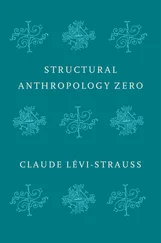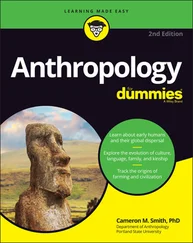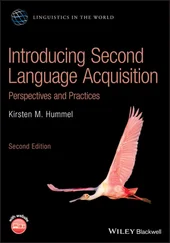First, we would like to thank those without whom the first edition of this book (and in many cases both editions) would not have been possible: Marzia Balzani, Heather Bonney, Andrew Canessa, Thomas Hylland Eriksen, Katarina Fritzsche and Brian Morris, all of whom contributed particularly generously. In addition, Nicholas Badcott, Ben Burt, Hilary Callan, Pat Caplin, Liana Chua, Robin Dunbar, Peggy Foerer, Anabella Hendry, Joy Hendry, Gary Marvin, Theresa McCarthy, Daniel Miller, Desirée Pangerc, Sarah Pink, Angela Rivière, James Staples; the British Museum, the Horniman Museum, the Museum of Archaeology and Anthropology, the Pitt Rivers Museum, Oxford, and the Krapina Neanderthal Museum in Croatia. Everyone who has contributed has continued to surpass our expectations. This is testament to the subject, which produces the kind of people who have become so much more than creators of new knowledge. Anthropologists have the shared qualities of an excellent sense of humour, life experience and an awareness of the richness of life. This was simply inspiring and motivating.
The second edition is enrichened by the energy and support we received from Edward Liebow, Executive Director of the American Anthropological Association, David Shankland, Director of the Royal Anthropology Institute, special guidance by Liana Chua, and contributions from Crystal Abidin, Katherine E. Carter, Sophie Chao, Yu-Chun Chen, Simon Coleman, Miguel Diaz-Barriga, Margaret Dorsey, Alexander Edmonds, Peggy Foerer, Ruth Gomberg-Munoz, Ana P. Gutiérrez Garza, Nora Haenn, Naomi Haynes, Joy Hendry, Jim Igoe, Tim Ingold, Sabine Klocke-Daffa, Laura Korčulanin, Jonathan Lanman, Gideon Lasco, Jonah Lipton, Diego Maria Malara, Laura McAtackney, Tom McDonald, Aimee Middlemiss, Kiran Mirchandani, Mwenda Ntarangwi, Dimitrios Papadopoulos, Sarah Pink, Peter Rudiak-Gould, Jonathan Skinner, Richard Sosis, Jack Stuster, Nico Tassi and Dmitris Xygalatas.
Thanks also go to the photographers whose pictures make this book so rich and interesting. We would like to thank the anonymous reviewers of our work, and, last but not least, the staff at Polity, particularly Jonathan Skerrett, Karina Jákupsdóttir and Sarah Dancy for their hard work and support in the realization of this second edition.
CHAPTER 1What Makes Us Human?
Contents
1 Key issues and debates
2 How Did Humans Evolve?
3 Explanations of human evolution
4 Early humans
5 Climate change, human evolution and the Anthropocene
6 Where did modern humans originate from?
7 Similarities and differences between humans and nonhuman primates
8 Cultural Evolution
9 Cooking
10 Language
11 Symbols
12 Recording information: The origins of written language
13 Social life
14 Sharing resources, exchange
15 Rituals.
16 Expressing identity
17 How Do Humans Vary? The Concept of Race and a Critique of the Concept
18 Biological differences between humans
19 Culturally constructed concepts of race
20 American Association of Physical Anthropologists’ Statement on Race and Racism (2019)
21 Conclusion
22 End-of-chapter questions
23 Key terms
24 Personal investigation
25 Suggested further sources
How and when did Homo sapiens evolve?
How similar are humans to other animals and in what ways are they different?
What methods do we use to find out about early humans?
How did different groups of early humans interact and what can this tell us about humans today?
What impact has humanity’s specific biological evolution had in terms of shaping our cultural evolution: what is the relationship between human biology and culture?
To what extent do humans vary?
The question of what makes human beings different from all other species is central to anthropology. This chapter explores the particular characteristics that, over the past 6–7 million years, since they shared a common ancestor with apes, have allowed Homo sapiens to become the most successful of the primates. We now know that there were many types of early human, so this chapter explores how Homo sapiens interacted with other forms of early human, and what this tells us about humans today. It also looks at the behavioural and physical traits that humans continue to share with other primates, such as chimpanzees and bonobos. The study of human origins and of the adaptations that make our species unique defines the field of evolutionary anthropology. This field overlaps with paleontology, which is the study of life on earth, drawing on information provided by fossil remains. This field overlaps with archaeology, which is the study of early human objects, or artefacts, that tell us what early human life was like.
primateA mammal of the order Primates, characterized, for example, by refined development of the hands and feet and a large brain
paleontologyThe study of life on earth, often drawing on information provided by fossils
One of the first evolutionary anthropologists was Charles Darwin, creator of the theory of evolution. Evolutionary anthropology has since grown into a multifaceted discipline investigating the origins of humanity through fossils and, more recently, ancient DNA, and genetic analyses. This is supported by an ever-clearer picture of what make humans unique. Among the many features that distinguish us from other species – perhaps the fundamental difference – is the fact that humans have a highly developed culture. Simply put, culture is every aspect of life that goes beyond biology.
Although there is evidence of culture in some other species, nowhere is it more complex, rich and evolved than within human societies. So, how did the specific physical evolution of Homo sapiens lead to the development of a complex culture while that of other species did not? What is the relationship between biological evolution and cultural evolution? If all humans share the same biology, to what extent do they share the same culture? Are there such things as cultural universals?
cultural evolutionThe ways in which humans have evolved beyond their biology
The final section of this chapter explores the extent of biological variations between humans, making a clear distinction between biological differences and socially constructed ideas about race (which are widely criticized).
How are human origins explained?
How do different groups explain the existence of dinosaurs and other extinct animals?
Explanations of human evolution
There have been a number of attempts to explain the origins of the human species. These explanations are of interest in themselves as they reflect the dominant ideas of the times from which they originate. They have also been highly contentious and continue to provoke a strong response that goes much further than anthropology, to religion, politics and economics.
Creationism and evolution
Until the eighteenth century, religion shaped the dominant explanations for the origins of human life. In Europe, these came largely from Genesis, the first book of the Bible. This explanation, known as creationism, was based upon the idea that God had created all life in six days, and that the characteristics of plants and animals were fixed and unchangeable.
Читать дальше
